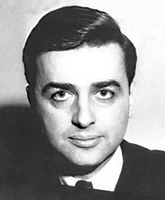










Edwin Herbert Land was an American scientist and inventor,best known as the co-founder of the Polaroid Corporation. Among other things, he invented inexpensive filters for polarizing light, a practical system of in-camera instant photography, and his retinex theory of color vision. His Polaroid instant camera, which went on sale in late 1948, made it possible for a picture to be taken and developed in 60 seconds or less.
Edwin Herbert Land was born on May 7, 1909, in Bridgeport, Connecticut. He attended Harvard University for a year, studying chemistry, before dropping out and moving to New York City. In New York, Land worked on scientific experiments independently. During the day, he conducted research at the New York Public Library. After hours, he used a Columbia University laboratory. The result of these activities was the development of what he called a Polaroid J sheet, which was a groundbreaking advance in polarizing light technology.
Polaroid
Land returned to Harvard in time, focusing on chemistry and physics. With one of his professors, he founded the Land-Wheelright Laboratories to continue his polarization studies. The company was renamed the Polaroid Corporation in 1937.
The technology that Land developed had a wide range of applications, and was used in the production of sunglasses and color animation. During World War II, Land and his team applied themselves to the refinement of night-vision goggles and a viewing system called the Vectograph, which revealed enemy camouflage. After the war, the team contributed to the development of the U-2 spy plane. Employees described Land as driven and intensely committed to his work, spending long hours in the lab.
In 1943 in Santa Fe, Land was asked by his 3-year-old daughter why the camera that they used couldn't produce a photo immediately. He mulled the question over and was inspired to invent such a device. Then in 1947, Land publicly demonstrated an instant camera, called the Polaroid Land Camera, with film. The cameras were soon an instant success, selling out during the Christmas season in 1948, and would remain on the market for 50 years thereafter. A color-photo version of the product was released in 1963.
As a manager, Land was known for his progressive policies. Unlike many of his contemporaries, Land hired women and minorities for research and management positions, rather than secretarial and custodial roles. In the 1960s, he hired minorities ahead of many other firms, embracing early affirmative-action programs.
In the 1970s, Polaroid pioneered color instant film. In 1977, despite Land's business prowess, the company was unable to make a success of a film venture called Polavision. The company sustained a significant loss on the Polavision effort. As a result, Land chose to resign his position as chairman in the early 1980s.
Later Life
Edwin Land died on March 1, 1991, at the age of 81, in Cambridge, Massachusetts, and is buried at the Mount Auburn Cemetery. He was survived by his wife, Helen Terre Maislen, whom he married in 1929, and their two daughters, Jennifer and Valerie.
Following his death, Land's assistant destroyed his papers, leaving gaps in both the historical record of Land's life and the development of the Polaroid Corporation.
Presidential Medal of Freedom (1963)
IRI Medal (1965)
Perkin Medal (1974)
Harold Pender Award (1979)
National Medal of Technology
Fellow of the Royal Society